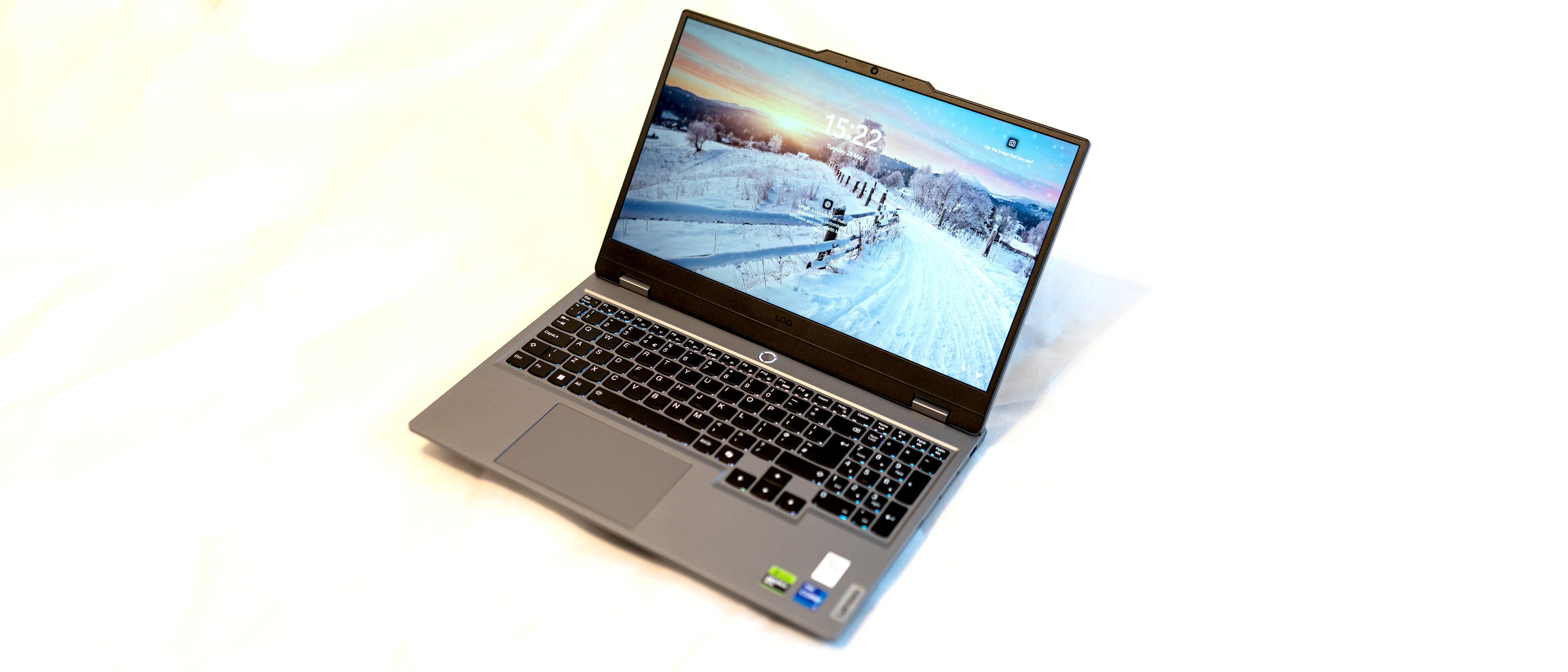
Lenovo’s laptop lineup is a busy one, with the various lines bleeding into one another. The LOQ appears to be an attempt to create a budget gaming brand within Lenovo's range, and takes a lot of inspiration from the older IdeaPad 3 Gaming (it has the same basic shape and the logos and ports are in the same positions, though the materials may be different and it lacks the IdeaPad’s big vent on the side) without eating too much into the sales of premium Legion machines. It’s mostly successful, with a fast CPU and lower-end graphics chip joined by just 16GB of RAM and a 1080p screen to create something that will hit the spot for those who prefer to work on a larger external monitor, then take their creations home with them to plug back in again later.
Lenovo LOQ 15: Key specifications
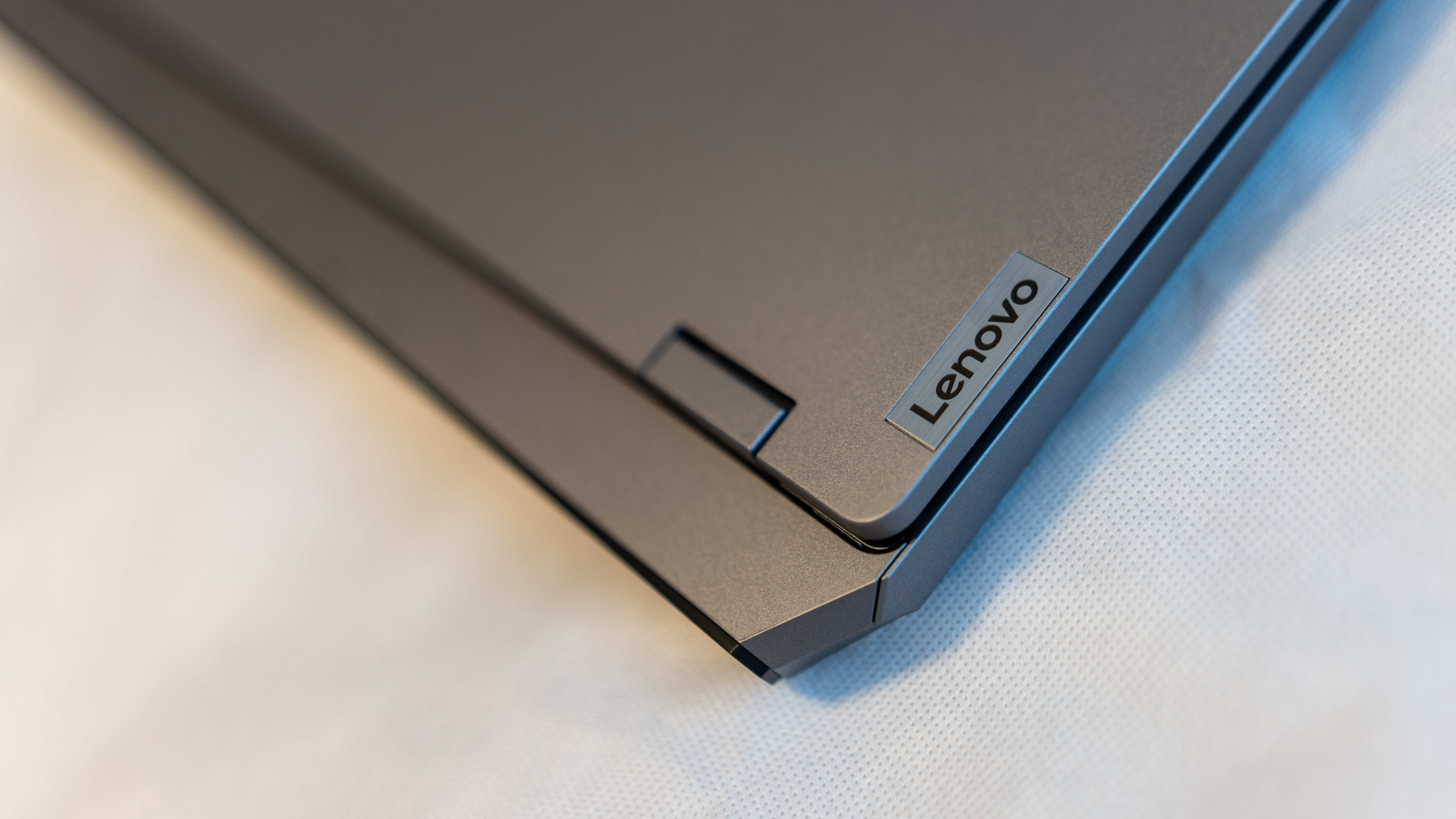
Design and build
For a gaming laptop, the LOQ 15 is restrained in its looks. It’s a plain grey case with black keys and bezel, the LOQ logo picked out in silver on the lid. There's a light-up power button centrally placed under the screen, and the keyboard will light up in rainbows if you let it, though it’s easy enough to turn off in the Lenovo Vantage app. The keyboard contains the new Copilot key to the right of the spacebar, and there's a mini numpad squeezed in too, alongside full-size arrow keys that project downward next to the trackpad. At the top edge of the lid, the webcam cluster protrudes upwards to form a useful tab with which to open the laptop up.
It’s a basic laptop design, quite thick compared to less game-focused models and with a few features that betray its business heritage, such as a webcam off switch and an Ethernet port. It doesn’t have the aggressive styling of many gaming machines, and wouldn’t look out of place in a meeting space or studio.
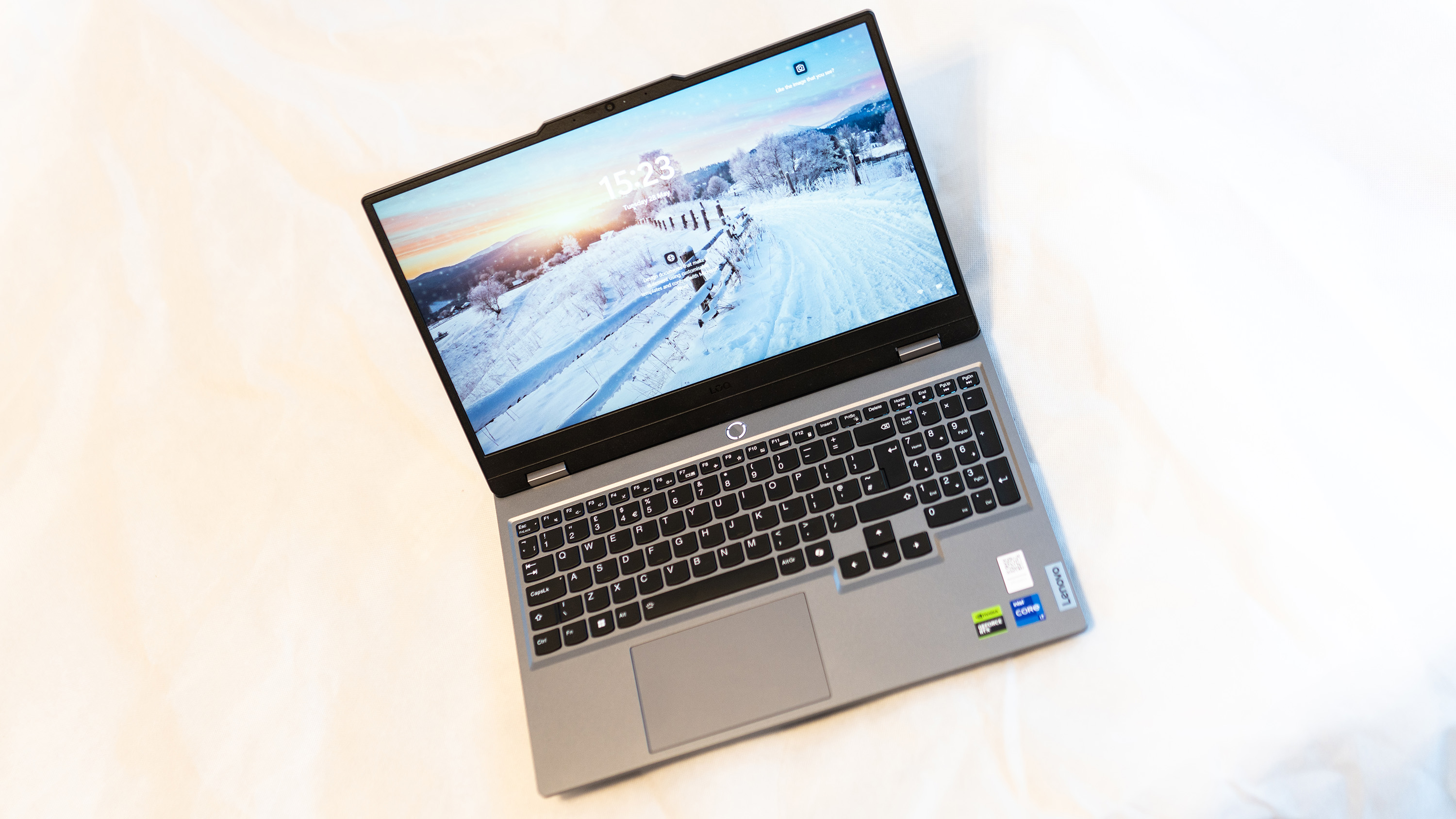
While the build is mostly plastic, it doesn’t feel like there's any flex in the chassis, and the weight of the laptop - twice that of a MacBook Air M3 - points to a metal frame underneath. Two large vents exit at the rear of the laptop, evidence of the hyperchamber cooling system that works hard to blow the heat off the chips inside.
There are no ports on the left-hand side of the machine, with the various connectors spread across the right and rear of the laptop instead. This makes it important to place the LOQ properly when using it at a desk, as you’ll want your headset cable and USB devices you want to remove on the right - there's only one USB-C port too, again on the right, and it’s a plain old USB 3.2 instead of a Thunderbolt, though it does support DisplayPort output and you can charge through it if you can supply enough wattage - it won't accept a phone or tablet charger. At the back, you’ll find more USB-A ports, a full-size HDMI 2.1 (important for new graphics cleverness such as variable refresh rates on an external screen), a charging connector and gigabit Ethernet.
Features
The LOQ’s screen is a 1080p IPS capable of displaying images at 144Hz with a peak brightness output of 318 nits. It’s pretty basic compared to the exotic 240Hz or HDR OLED displays out there, but it gets the job done. Colour reproduction is touted as being 100% of sRGB by Lenovo, and our tests confirm this, along with 81% of both Adobe RGB and P3.
There's a mid-sized trackpad below a keyboard that’s quite nice for a budget machine - it has 1.5mm of key travel, something helped by the depth of the chassis, and the keys are nicely damped so their click is dull rather than harsh when you type. The numpad keys are smaller than the rest, and across the keyboard, the caps are nicely rounded - they’re also replaceable if you want to swap out the standard WASD for something more vibrant. There's four-zone RGB lighting underneath, controlled by the Vantage app, and the Enter key is high rather than L-shaped, with the octothorpe or hash so close to it that it’s possible to clip it by accident when you’re typing until you get used to the placement.

One interesting addition is the Lenovo LA1 AI chip. This means that with the power options set to Balanced mode in the Lenovo Vantage app, the chip monitors your usage and will change processor settings to preserve battery life if you’re not using it to its full capabilities while jacking it up when it notices you load up Cyberpunk 2077. Little brother is watching you, and his thumb is on the power switch.
It seems odd to praise the charging port on a laptop, but if you’re going to use a dedicated socket rather than USB-C, then Lenovo’s is one of the best. It’s distinctive, goes in both ways up, is easy to slip in and out, and the battery charges very quickly from the 230W brick.
One thing that loses the LOQ 15 marks is the lack of Thunderbolt connectors - while the 10Gbps USB-C port is fine (and nice to see, as 5Gbps ports are all too common), and there are separate charging and video sockets, if you’re accessing external SSD storage you want all the speed you can get. Speaking of storage, a 500GB internal SSD is getting a bit tight in 2024, especially if you’re going to fill it with games (which can easily be 150GB in size) or video footage. Some sort of external drive will be a must-buy for expansion and backup purposes.
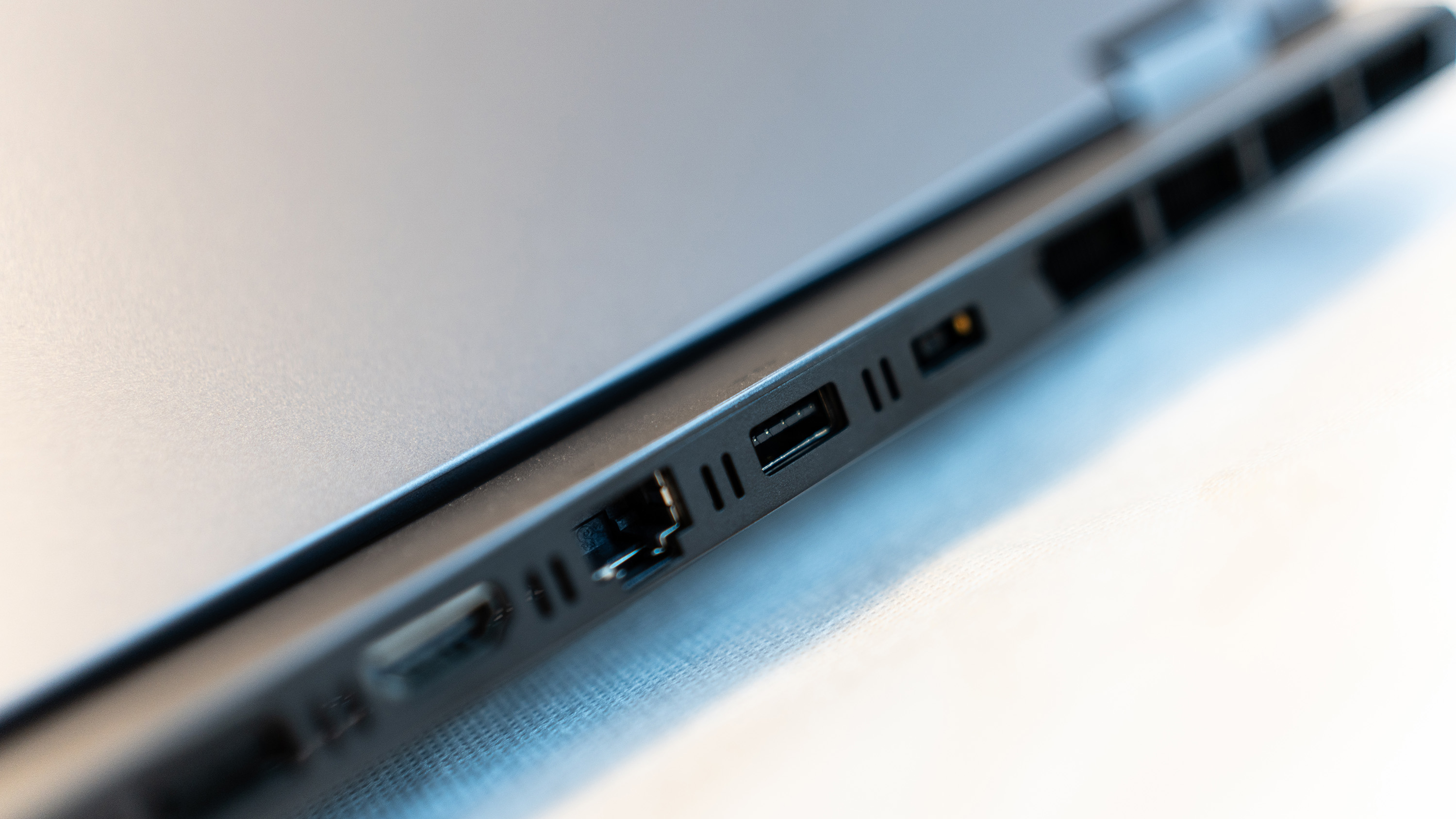
Performance
At the heart of the LOQ we were sent for review is a 13th-gen Intel Core i7 with 14 cores - six of them performance cores - for a total of 14 simultaneous threads. It’s a fine chip, though is getting left behind in these days of Snapdragons and Core Ultras. With a maximum turbo speed of 4.9GHz it’s certainly got a lot of grunt, but the peak power draw of 157W, plus the 115W of the GeForce RTX 4060, means it can gobble a lot of power when gaming or otherwise working hard.
We’re not sure if it’s a symptom of the AI performance monitoring, but we saw some unusual fan behaviour from the LOQ. Running just a web browser, the fan stopped and started every few seconds, pulsing on and off instead of running constantly at a low speed. When you’re stressing the machine, it creates a noise like the sound of rain on the roof.
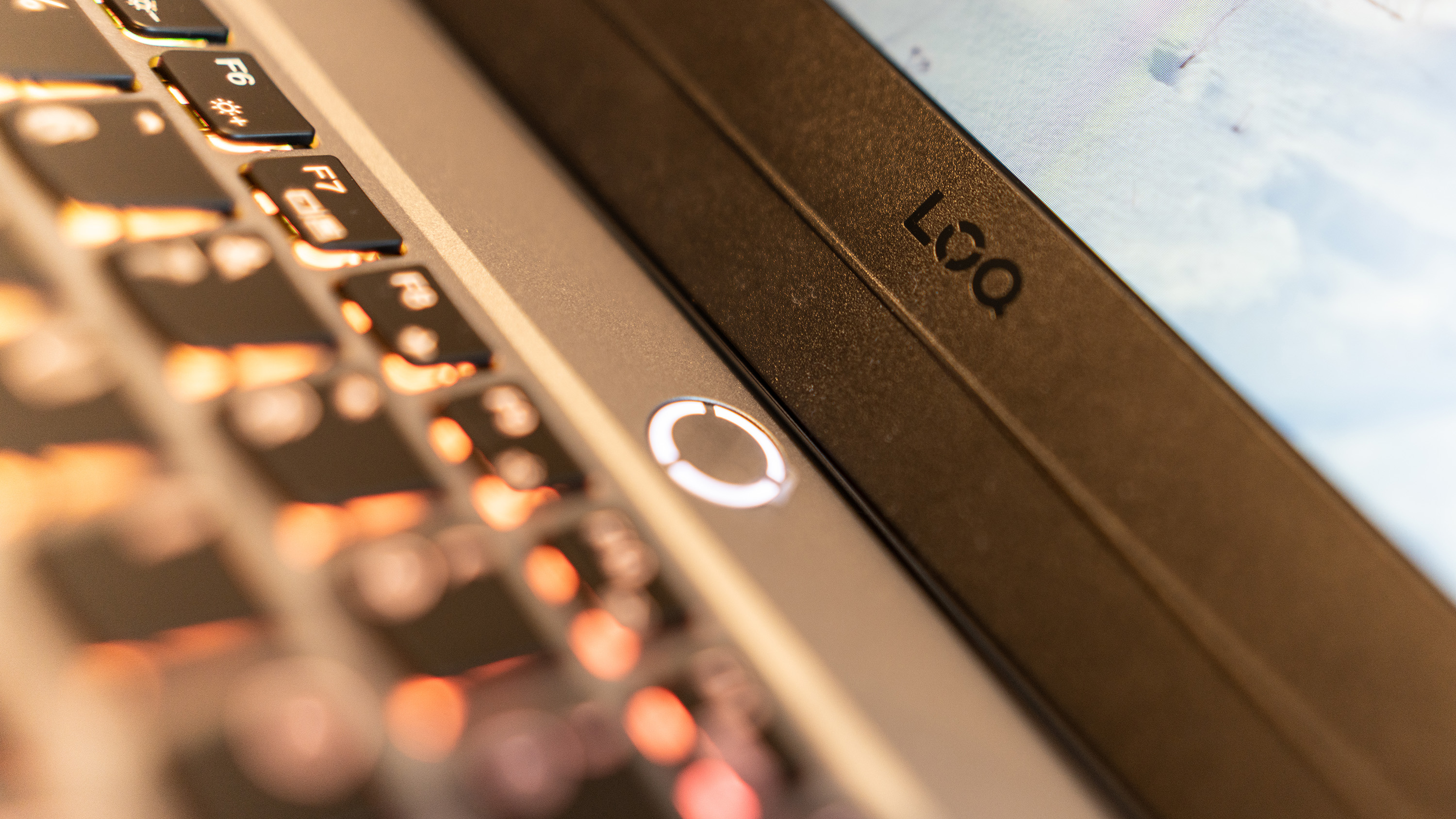
In our benchmark tests, the LOQ was outdone by the Acer Predator Helios 16 (which has the same GPU and a slightly better CPU), but not by much. Its single-core Geekbench results are lower than those of the MacBook Air M3, but it beats Apple’s machine in multi-core processing thanks to having more cores to work with.
Given the performance envelope it has to play with, the Lenovo LOQ 15 is a completely capable machine for productivity and creative apps, though your results won’t be as fast as rigs with more processing cores and stronger GPUs. What lets it down is the battery life, which at only 2.5 hours will send you scurrying back to the wall socket more often than you’d like. It’s a common trait of gaming laptops to be thirsty for power, and the LOQ 15 is beaten on this score by a lot of other machines.
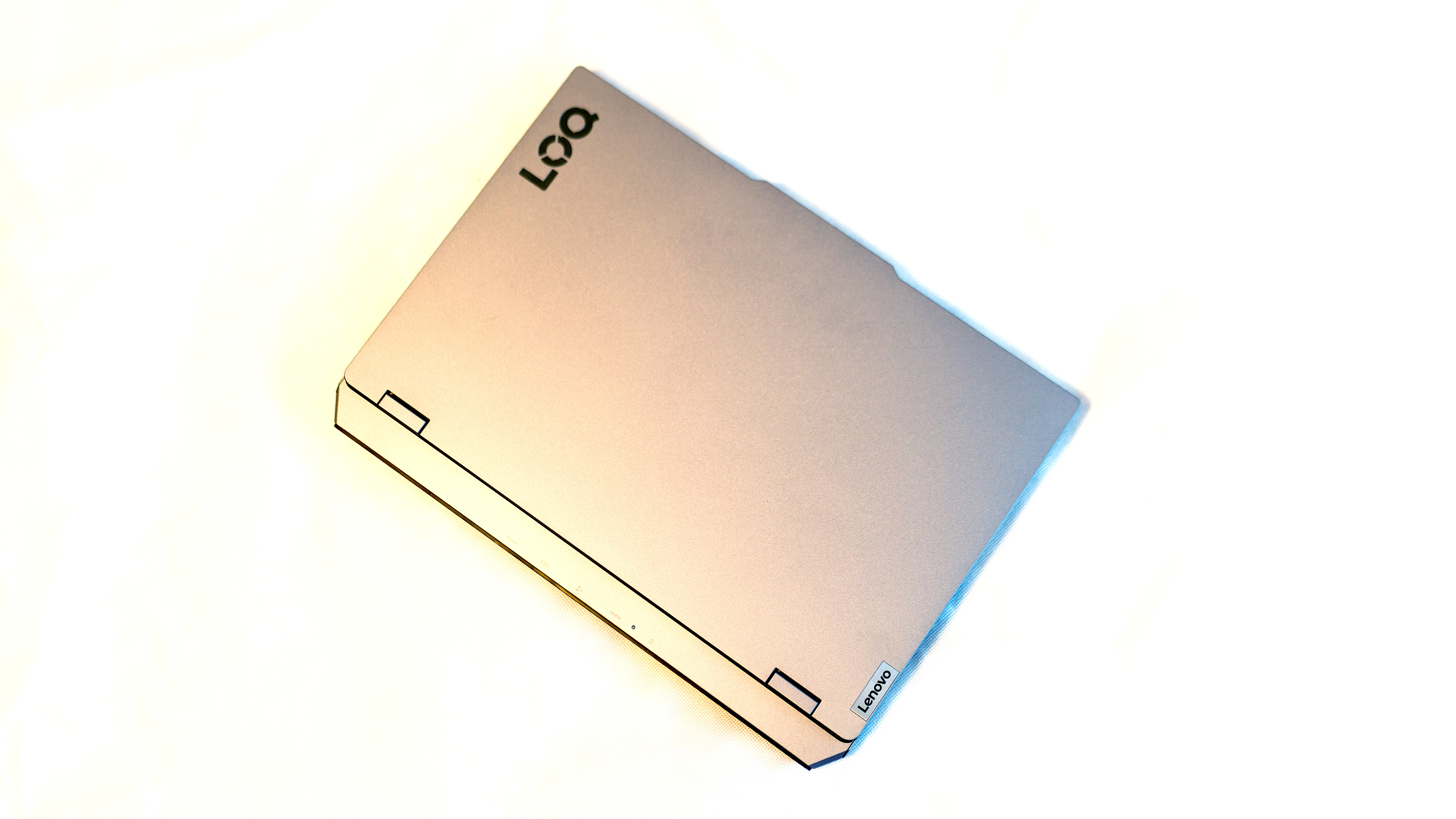
Price
There are some good-value laptops in the LOQ line, but the one we’ve tested here is the most expensive spec, going for £1,327 on Lenovo's site at the time of writing. This makes it more expensive than the Macbook Air M3 but a bit cheaper than the Acer Predator Helios 16. It’s much cheaper than the MSI Raider GE78 HX 14V, but as that machine comes with an RTX 4070 and Intel i9, you’d expect it to be. Overall, you get good performance for your money, as long as you’re OK with the mediocre battery life.
Who is it for?
Apart from gamers, this is a machine that would make a fine choice for those who love to throw pixels around. It has ample power in both its processors for Photoshop filters and working with large documents. Your gaming framerates might not be the best, especially if you want to output at greater than 1080p, but the screen’s colour response isn’t bad, and the 144Hz refresh rate means you’ll be able to produce some smooth framerates.
Should I buy it?
Buy it if:
- You want good performance on a budget
- You want to play some games
- You’ll be using an external monitor
Don't buy it if:
- You need Thunderbolt speeds
- Battery life is important







